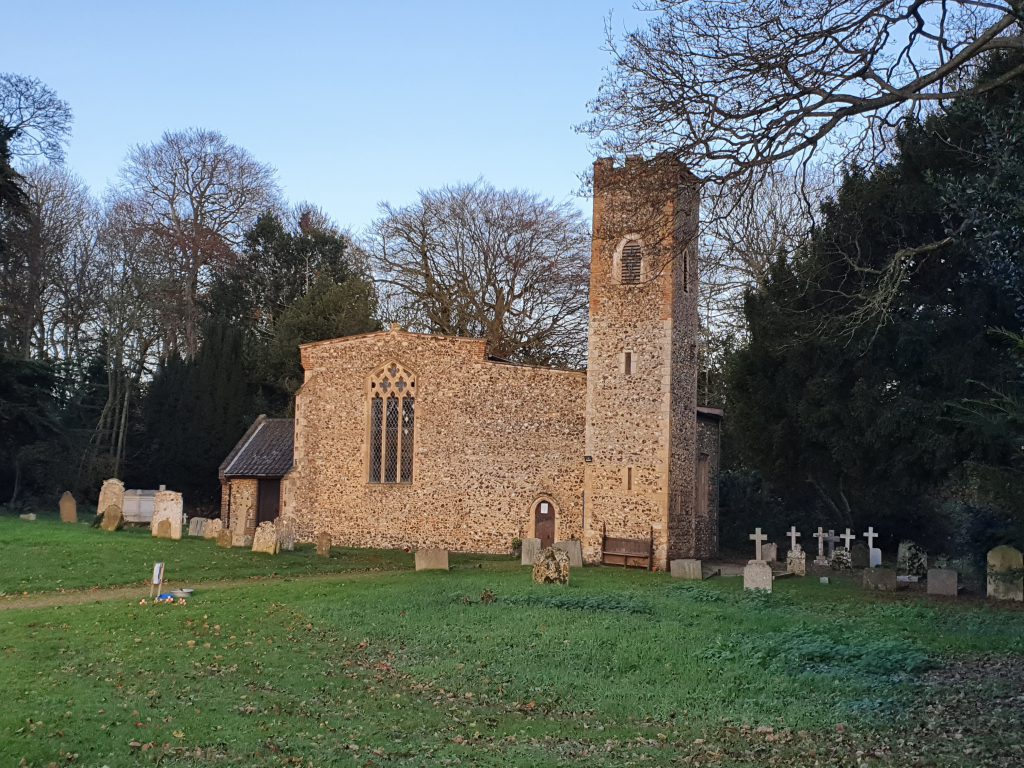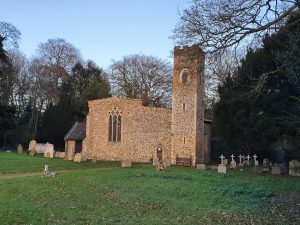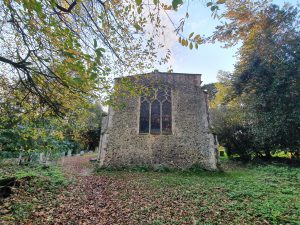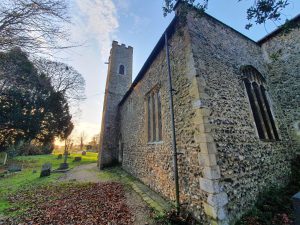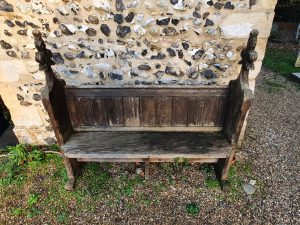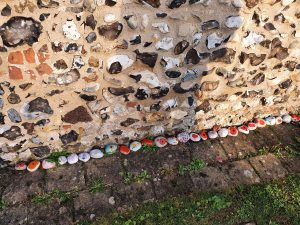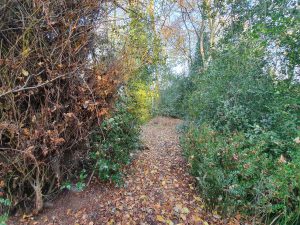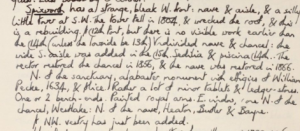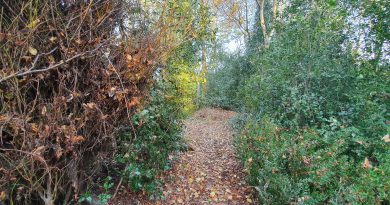Spixworth – St. Peter’s Church
One exciting element about old buildings is that they often just don’t make sense (OK, they do to experts, but I mean make sense to me). There have been centuries of bits being added on, changed, removed, refurbished and faffed about with, ending up with a church that looks like this. But, this Grade I listed church is very much unique, and is more beautiful because of that.
It took me a while to fully understand this building, but in the above photo, the vestry is on the left, then the nave with the larger window, then the south aisle and then the tower. The chancel is behind the nave and the tower once stood separate from the main part of the church. It is though likely that the tower was once connected to an older church, from the early Norman period, that was entirely removed.
The dating is more complex, but the base of the tower was likely first, then the nave and chancel are fourteenth century, the south aisle is fifteenth century, the rebuilt tower is from the same period (although the different brickwork is from when the top of the tower fell down in the early nineteenth century) and the vestry is much newer (some records say late nineteenth century and some early twentieth, but I doubt it makes much difference to anything….). Or, that’s my best understanding of what is a complex building way beyond my architectural knowledge….
This is the chancel, at the rear of the church.
And, from the other side of the building, that’s the tower at the rear, then the south aisle in the middle and the side of the chancel on the right. The Victorians didn’t maul this building about too much, indeed the church was restored during this period since the roof was falling down and this wasn’t seen as ideal….
An old pew being repurposed as an outdoors seat.
Little stones, which I suspect would have been moved about by two boys that I know….
The church has this rather lovely woodland trail, with burials alongside part of it.
This is an internal note from the 1960s now released by the Church of England, although I’m not sure that the denizens of Spixworth would be delighted at the description of their “silly little tower”.

